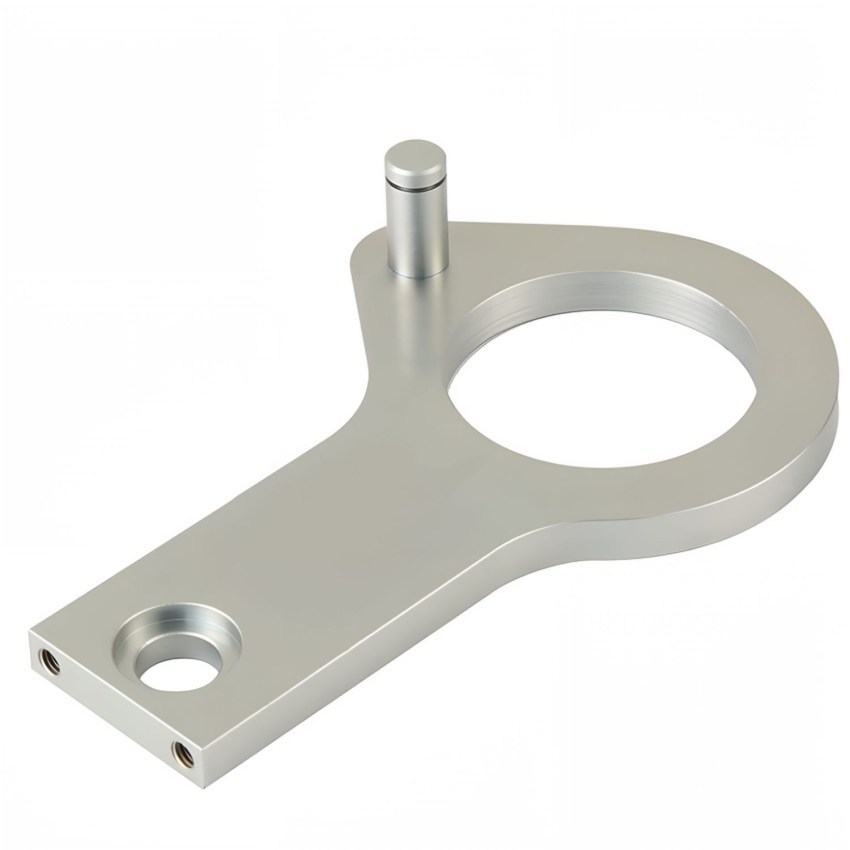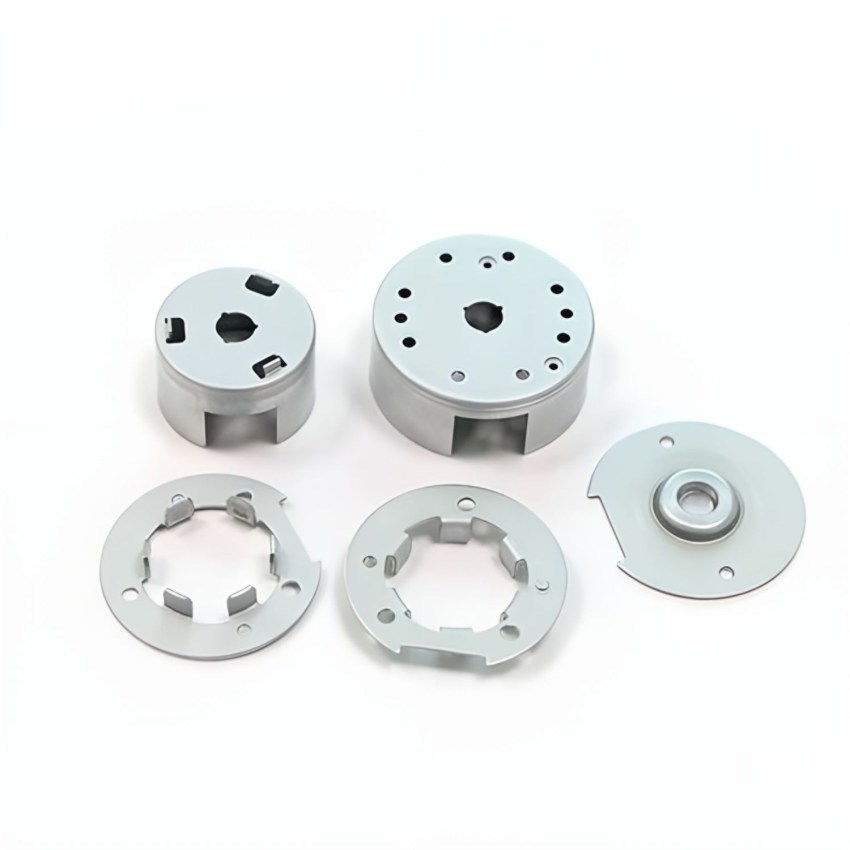Why Sheet Metal Processing is Essential for Modern Industries
Release time:
2025-03-31
Why Sheet Metal Processing is Essential for Modern Industries Table of Contents Introduction to Sheet Metal Processing The Importance of Sheet Metal Processing in Manufacturing Applications of Sheet Metal Processing Across Industries Benefits of Sheet Metal Processing Techniques Used in Sheet Metal Processing Challenges in Sheet Metal Processing The F

Why Sheet Metal Processing is Essential for Modern Industries
Table of Contents
- Introduction to Sheet Metal Processing
- The Importance of Sheet Metal Processing in Manufacturing
- Applications of Sheet Metal Processing Across Industries
- Benefits of Sheet Metal Processing
- Techniques Used in Sheet Metal Processing
- Challenges in Sheet Metal Processing
- The Future of Sheet Metal Processing in Industry 4.0
- Conclusion
- Frequently Asked Questions
Introduction to Sheet Metal Processing
Sheet metal processing serves as a cornerstone for modern manufacturing across various industries, including automotive, aerospace, electronics, and construction. This method involves transforming flat sheets of metal into desired shapes and forms through various techniques, ensuring precision and efficiency. As industries strive for innovation and cost-effectiveness, understanding the fundamentals and advantages of sheet metal processing becomes increasingly crucial.
The Importance of Sheet Metal Processing in Manufacturing
The significance of **sheet metal processing** cannot be overstated. It enables manufacturers to create components that are not only functional but also aesthetically pleasing. This processing technique offers flexibility that is essential in today’s fast-paced market. The ability to customize designs, reduce waste, and enhance product longevity results in an overall improvement in manufacturing efficiency.
Customization and Versatility
One of the primary reasons why sheet metal processing is essential is its ability to adapt to various design specifications. Manufacturers can easily produce unique shapes, sizes, and configurations tailored to their specific needs. This level of customization is pivotal in industries where unique designs and specifications are standard.
Cost-Effectiveness
Sheet metal processing is often more economical than other manufacturing methods. The efficiency of processes like laser cutting and punching results in lower labor and material costs, making it a preferred choice among manufacturers. By minimizing waste and maximizing the use of materials, companies can achieve significant cost savings.
Applications of Sheet Metal Processing Across Industries
Sheet metal processing finds applications in a wide array of industries. Below are some of the most prominent sectors that rely on this essential manufacturing technique.
1. Automotive Industry
In the automotive sector, sheet metal processing is vital for producing body panels, chassis components, and interior structures. The **automotive industry** demands high strength-to-weight ratios, making sheet metal an ideal choice for creating lightweight yet durable parts.
2. Aerospace Industry
The aerospace industry utilizes sheet metal processing for various components, including aircraft fuselages, wings, and frames. The precision and strength afforded by sheet metal are critical for ensuring safety and performance in aviation.
3. Electronics Manufacturing
In electronics, sheet metal is utilized for creating enclosures and support structures for devices. The ability to customize sheet metal components allows for efficient heat dissipation and protection from electromagnetic interference.
4. Construction and Architecture
Sheet metal processing is also significant in construction and architectural applications. Roofing, siding, and structural elements are often produced from sheet metal, providing durability and aesthetic appeal while meeting building codes.
5. Medical Equipment
The medical field increasingly relies on sheet metal processing for producing equipment casings, supports, and various components. The need for precision and hygiene in this industry makes sheet metal processing an ideal solution for medical device manufacturers.
Benefits of Sheet Metal Processing
The advantages of sheet metal processing extend beyond its applications. Here are some of the key benefits that make it indispensable in modern manufacturing:
Precision Engineering
**Precision** is a hallmark of sheet metal processing. Technologies like CNC machining and laser cutting ensure that components are manufactured with high accuracy, reducing the need for costly rework and improving overall product quality.
Durability and Strength
Sheet metal products exhibit exceptional durability and strength. Materials such as stainless steel and aluminum provide resistance to corrosion, wear, and environmental factors, ensuring longevity and reliability in various applications.
Rapid Prototyping
The speed at which sheet metal components can be designed and produced allows for rapid prototyping. This agility in manufacturing facilitates quicker product development cycles, enabling businesses to bring their innovations to market faster.
Reduction of Waste
Efficient sheet metal processing techniques minimize waste during production. By employing methods like nesting and efficient layout planning, manufacturers can optimize material usage and reduce excess scrap.
Techniques Used in Sheet Metal Processing
Several techniques are employed in sheet metal processing, each suited for specific applications and desired outcomes. Understanding these methods can enhance the effectiveness of manufacturing processes.
1. Laser Cutting
Laser cutting is a highly precise method that utilizes a focused laser beam to cut through sheet metal. This technique is favored for its speed and accuracy, allowing for intricate designs and complex shapes.
2. CNC Machining
Computer Numerical Control (CNC) machining automates the cutting, shaping, and finishing of sheet metal components. This technology ensures high precision, repeatability, and efficiency, making it an essential part of modern manufacturing.
3. Punching
Punching involves creating holes or shapes in sheet metal by using a punch and die. This technique is widely used for producing parts with specific geometries, such as brackets and panels.
4. Bending
Bending is a fundamental process used to create angles and folds in sheet metal. Various methods, such as air bending, bottom bending, and rotary bending, can achieve different results based on the required specifications.
5. Welding
Welding techniques, including MIG and TIG welding, are employed to join different sheet metal components together. This process is essential for creating strong and durable assemblies in a variety of applications.
Challenges in Sheet Metal Processing
Despite its numerous advantages, sheet metal processing is not without challenges. Addressing these issues is crucial for maintaining high-quality production standards.
Material Limitations
Different metals have varying properties that can affect the processing techniques used. Choosing the right material for specific applications is essential to ensure the desired strength, weight, and corrosion resistance.
Tooling Costs
Investing in specialized tools and equipment for sheet metal processing can be costly. Manufacturers must balance the upfront costs against the long-term benefits to ensure a sustainable production process.
Handling and Fabrication Complexity
Handling and fabricating sheet metal can pose challenges, particularly with larger or thicker materials. Implementing proper handling techniques and machinery is vital to avoid damage during processing.
The Future of Sheet Metal Processing in Industry 4.0
As we move towards **Industry 4.0**, the landscape of sheet metal processing is evolving. The integration of smart technologies, automation, and real-time data analytics is set to revolutionize traditional manufacturing processes.
Smart Manufacturing
The incorporation of IoT devices in sheet metal processing allows for increased efficiency and real-time monitoring of production lines. This data-driven approach enables manufacturers to make informed decisions and optimize operations.
Robotics and Automation
Robotic systems are becoming increasingly common in sheet metal processing, facilitating faster production and reducing labor costs. Automation not only improves efficiency but also enhances safety in hazardous manufacturing environments.
Advanced Materials
The development of advanced materials, such as composites and high-strength alloys, will further increase the capabilities of sheet metal processing. These materials can provide enhanced performance while maintaining lightweight characteristics.
Conclusion
In conclusion, sheet metal processing plays a vital role in modern industries, serving as a foundation for innovation and efficiency. Its versatility, cost-effectiveness, and precision make it essential across various applications, from automotive to aerospace. As technology continues to advance, the future of sheet metal processing promises even greater efficiency and capabilities, ensuring its relevance in an ever-evolving industrial landscape.
Frequently Asked Questions
1. What is sheet metal processing?
Sheet metal processing involves transforming flat sheets of metal into various shapes and components using techniques like cutting, bending, and welding.
2. What are the common materials used in sheet metal processing?
Common materials include stainless steel, aluminum, brass, and copper, chosen for their specific properties suited to various applications.
3. How does sheet metal processing impact manufacturing costs?
Sheet metal processing can significantly reduce manufacturing costs by minimizing waste and streamlining production processes, resulting in greater efficiency.
4. What industries rely on sheet metal processing?
Industries such as automotive, aerospace, electronics, construction, and medical equipment rely on sheet metal processing for various components and structures.
5. How is automation changing sheet metal processing?
Automation enhances efficiency and precision in sheet metal processing by integrating robotics and smart technologies that streamline production and reduce labor costs.
Key words:




